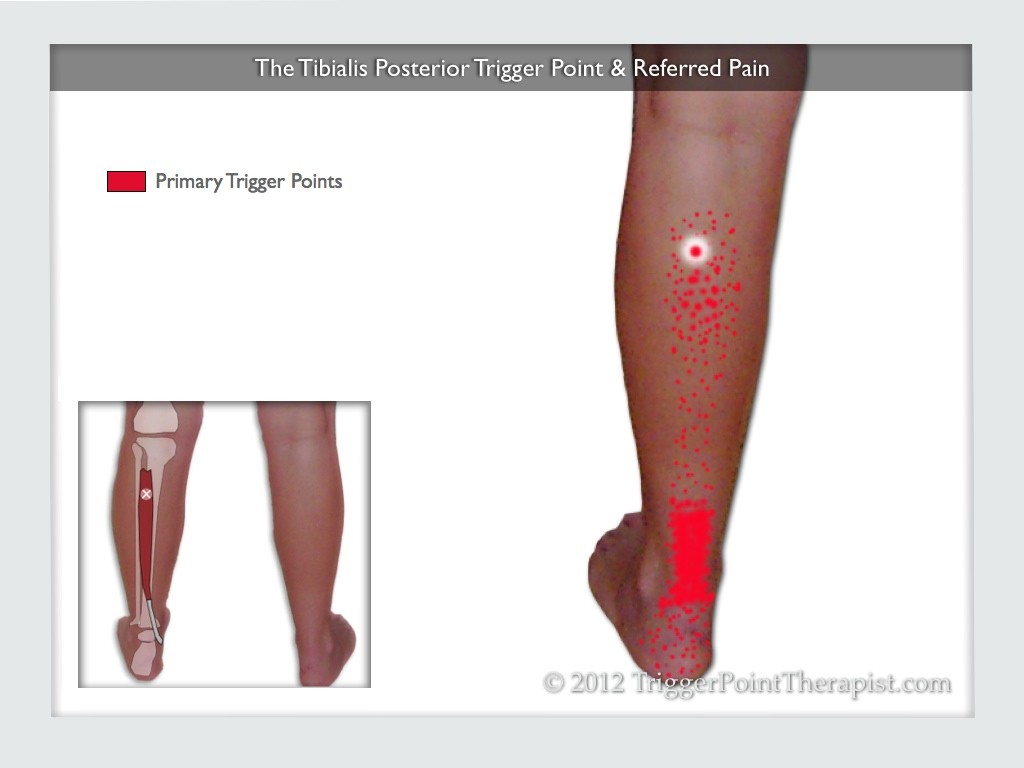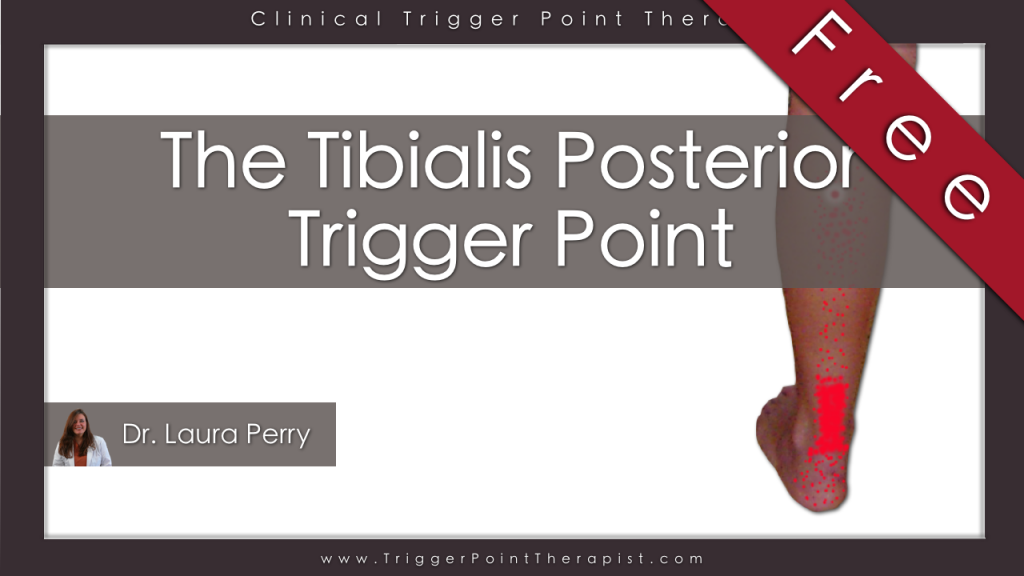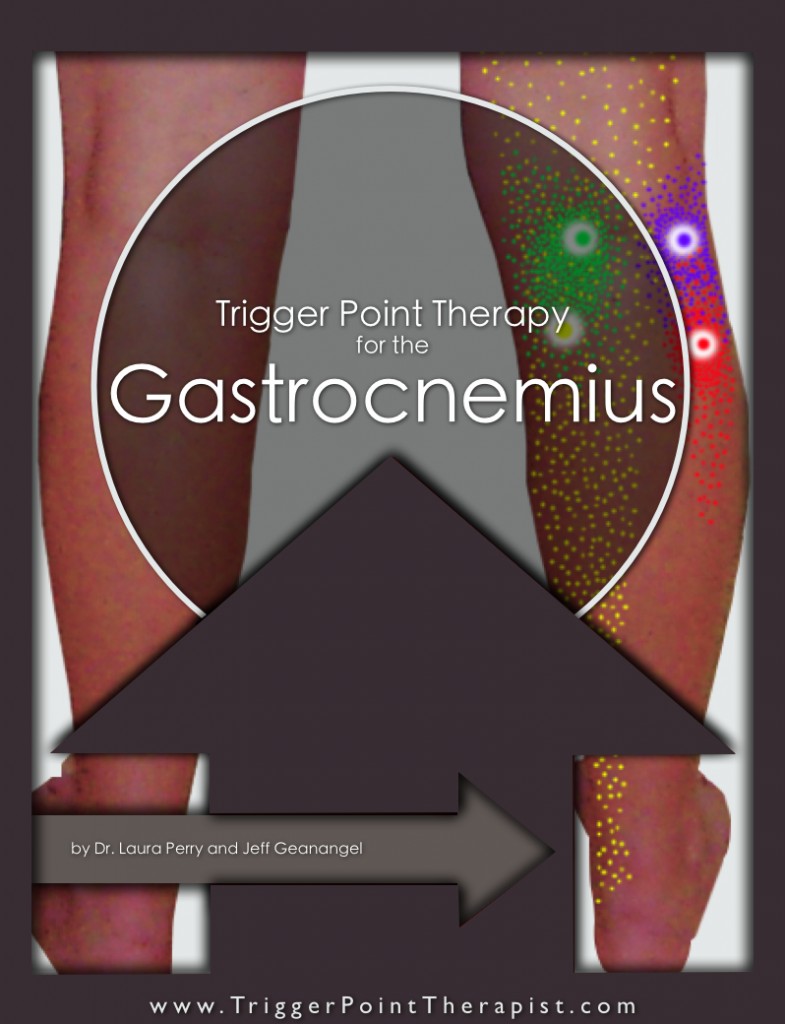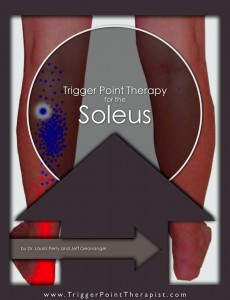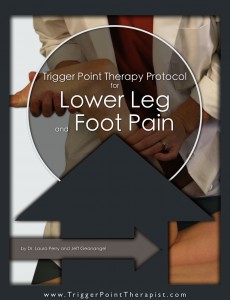The tibialis posterior trigger point is a sneaky-little-bugger of a trigger point that few people know about. It lies deep in the calf musculature and causes intense pain and burning in the Achilles tendon region. The pain will also frequently spread to the calf, the heel, and over the entire surface of the sole of the foot (including the bottom of the toes).
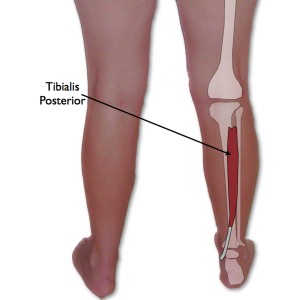 You typically see this trigger point flare-up in runners and hikers, especially if they walk or run on rough ground frequently. You can sometimes see this trigger point in older woman, but it is more common in serious and recreational athletes.
You typically see this trigger point flare-up in runners and hikers, especially if they walk or run on rough ground frequently. You can sometimes see this trigger point in older woman, but it is more common in serious and recreational athletes.
Some doctors may mistakingly diagnose this pain complaint as Posterior Tibialis Tendon Syndrome or Achilles Tendonitis, but chronic, unaddressed trigger point activity in this muscle (and the soleus muscle) can be the cause of these conditions and mimic their symptoms.
Diagnosing and treating the tibialis posterior trigger point can be a bit tricky, but I will share the little details with you that I have found produce consistent and successful results.
The Tibialis Posterior Muscle
Location: The tibialis posterior is a a long, thin muscle that lies deep in the calf, sandwiched between the soleus muscle and the interosseus membrane that runs between the tibia and fibula bones.
Function: The tibialis posterior functions to stabilize the ankle and foot during walking and running and to distribute the body weight evenly across the bones of the foot.
Muscle Structure: This muscle originates along the interosseus membrane and the inside edge of the fibula bone of the lower leg. It may also attach along the posterior surface of the tibia bone. Its tendon travels down the inside of the lower leg to wrap around the medial malleolus (inside ankle bone) and then fans out to attach to each of the bones that create the arch of the foot (primarily the navicular bone).
Muscle Actions: The tibialis posterior assists the gastrocnemius and soleus muscles with plantar flexion (downward push) of the foot at the ankle. It also produces inversion and adduction of the foot when the foot is not weight bearing (hanging free).
Synergistic Muscle Groups: The following muscle groups share common biomechanical functionality with the tibialis posterior and may become overloaded if it’s unable to perform its workload due to trigger point activity or injury:
- The gastrocnemius, soleus, and tibialis posterior muscles all act as plantar flexors of the foot.
- The tibialis anterior muscle also assists with inversion of the foot.
- The toe flexors (flexor digitorum longus and flexor hallucis longus) also assist the tibialis posterior with inversion of the foot.
Antagonistic Muscle Groups: The following muscle groups act to oppose the movements produced by the tibialis posterior and may develop trigger point activity in response to neurological dysfunction or weakness in the tibialis posterior muscle.
- The peroneus longus and brevis produce eversion of the foot, and thus oppose the inversion of the foot produced by the tibialis posterior and tibialis anterior muscles.
- The tibialis anterior produces dorsi-flexion (lifting) of the foot at the ankle and thus opposes the plantar flexion produced by the gastrocnemius, soleus, and tibialis posterior.
The Tibialis Posterior Trigger Point
Because the tibialis posterior lies deep to the soleus muscle, it’s important to relax the soleus by releasing any trigger points in it before attempting to locate the tibialis posterior trigger points. This trigger point is located near the muscle’s origination, about half-way between the tibia and fibula bones in the upper third of the lower leg.
Tibialis Posterior Pain
As show in the diagram above, this trigger point refers strongly to the Achilles tendon region, extending up into the calf and down across the bottom of the foot (not shown).
Tibialis Posterior Symptoms & Findings
Clients with an active tibialis posterior trigger point will present with any or all of the following symptoms or clinical findings:
- Severe pain in the sole of the foot and Achilles tendon region while walking or running.
- The pain may extend into the calf and heel regions.
- Any walking or running surface that requires extra foot stabilization, such as gravel or uneven pavement will exasperate the pain.
- Single-Heel Rise Test: A client with an active tibialis posterior trigger point will not be able to stand on the affected leg and rise up onto the ball of that foot. The muscles inability to contract strongly will prevent the bones in the foot from locking together to form a proper arch, thus the foot will not be able to bear the weight of the body on the ball of the foot. The client is also likely to experience pain along the medial malleolus (inside ankle bone) as they attempt this test.
- While standing, the person’s foot on the affected side will be both flat-footed (no arch) and everted (toes pointing out).
- Restricted Range-of-Motion: To perform this test, have the client lay face-up on the table. The therapist then everts (toes outward) and abducts (sole of the foot faces slightly to the outside), and then attempts to gently dorsi-flex the foot by pushing the ball of their foot towards their knee-cap. If present, the trigger point in the tibialis posterior should painfully resist the dorsi-flexion of the foot during this test. To exclude the involvement of the toe flexor muscles in this test, the therapist should gently bend all five toes back towards the knee-cap (toe extension) after the foot has reached its limit of dorsi-flexion. If extending the toes back doesn’t produce any additional pain, then only the tibialis posterior muscle is involved.
What Causes the Tibialis Posterior Trigger Point?
The following events or activities may activate or reactivate the tibialis posterior trigger point:
- Walking or running on a rough or sloping surface.
- Worn-out shoes that let the foot rock back-and-forth from side to side.
- Hyper-pronation of the foot during walking.
- Hyperuricemia (Gout) may predispose the tibialis posterior (and other muscles of the lower leg) to developing trigger point activity.
- Morton’ Foot Structure: A variation of the boney structure of the foot where the base of the second toe (next to the big toe) is farther forward than the base of the big toe. Typically, a thick callus forms on the foot where the second toe attaches to it. This condition causes side-to-side instability in the foot which can overload the muscles that act to stabilize the foot, such as the peroneal and tibial muscle groups.
Related Disorders
- Posterior Tibialis Tendon Dysfunction: This condition involves inflammation and/or tearing of the tibialis posterior tendon in the ankle region. It most likely results from chronic trigger point activity in the muscle that has overstressed the tendon. It is conventionally treated with orthotics and surgery when needed. It should be noted that the referred tenderness to the sole of the foot from the tibialis posterior trigger point will often make wearing an orthotic in the shoe too painful to be effective.
- Achilles Tendonitis: Runners are often diagnosed with this condition. Typically it presents as a burning pain in the Achilles tendon region at the beginning of a run that dissipates gradually, only to return strongly after the run is finished. The referred pain from trigger points in the soleus and tibialis posterior muscles can easily mimic this condition.
- Posterior Compartment Syndrome: A serious condition of the calf region marked by diffuse pain and swelling. This condition often occurs after a undiagnosed tear of the muscle and must be treated immediately to prevent serious complications.
Treatment of the Tibialis Posterior Trigger Point
Locating and releasing this trigger point can be a little tricky because it is located so deep in the calf. For complete step-by-step instructions for treating this trigger point please watch the free Tibialis Posterior Trigger Point video on YouTube below:
Related Articles:
- Soleus Trigger Points and Runner’s Heel Pain
- Tibialis Anterior Trigger Point: The Foot Drop Trigger Point
- Gastrocnemius Trigger Points: The Calf Cramp Trigger Points
Related Instructional Videos:
